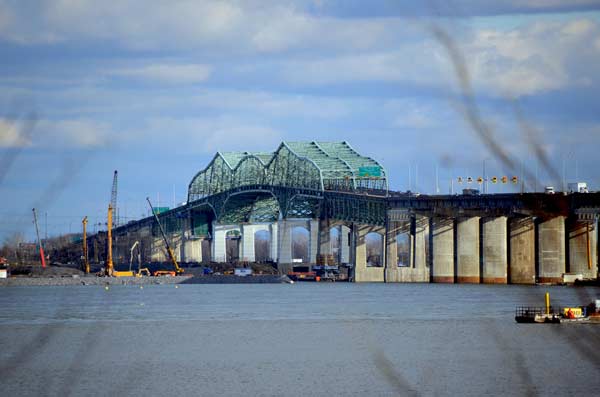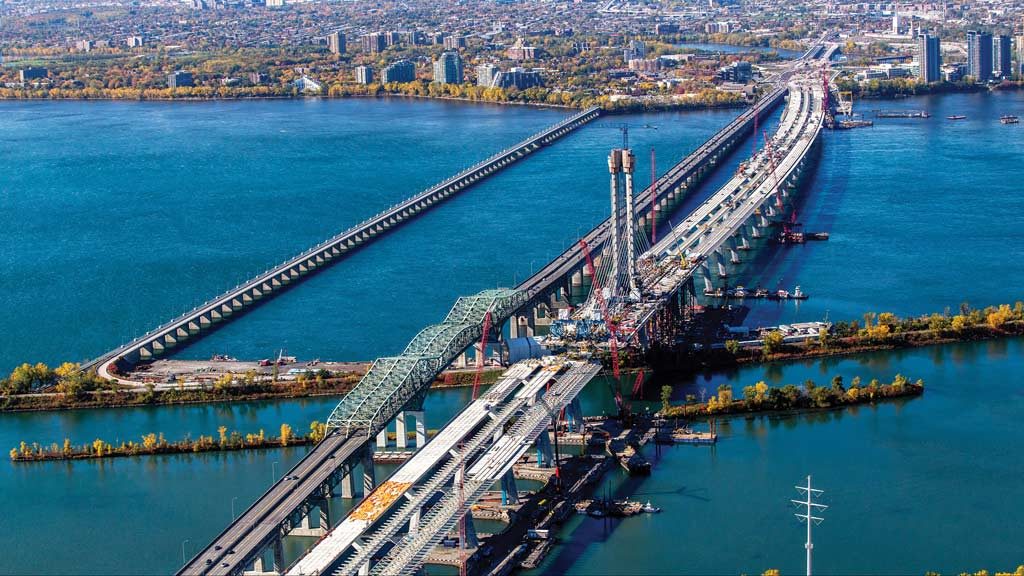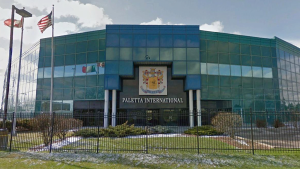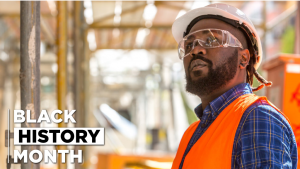Tear down of the Champlain Bridge, which spans the St. Lawrence River and connects the Island of Montreal, Que. with the South Shore suburbs, will begin this year using a sustainable development approach.
The contractors doing the deconstruction work, Nouvel Horizon St-Laurent consortium, formed by Pomerleau Inc. and Delsan-A.I.M. Environmental Services Inc., will have to abide by a number of strict rules and procedures aimed at minimizing the impact of the demolition on the public and the environment.
The venture, one of the most unique infrastructure projects in Quebec’s history, involves deconstructing the 3.4-kilometre, steel truss cantilever structure and redeveloping the shoreline afterwards.
Part of the estimated $400-million contract will require the consortium doing the work to put in place measures to protect fish species in the river from suspended sediment and stop work during spawning periods.
The consortium also will be required to deploy an ambitious program based on international best practices to recover and reuse bridge materials as much as possible for arts, tourism, recreation and infrastructure projects. A traceability program will be put in place to track materials through the disposal process.

“At this point, we don’t know how they are going to do it, but our criteria in terms of environmental protections are really strict,” says Nathalie Lessard, communications director at Jacques Cartier and Champlain Bridges Incorporated (JCCBI). “It’s going to present major challenges in terms of environmental protection and it’s going to be an immense operation requiring rigorous planning to minimize the impact on the environment and the public also because citizens live pretty close by this bridge.
“We are also concerned about recovering and reusing the bridge deconstruction material. There were several studies and tests that clearly identified the potential impact of the deconstruction on the environment.”
The consortium was announced in March and is still negotiating the details of the contract. In addition to the deconstruction, the contract will cover environmental protection measures, material reuse programs, research and development and the end-of-project shoreline development.
The JCCBI is also seeking Envision recognition for the project. Envision is a system that was designed to help infrastructure stakeholders implement more sustainable projects. The system sets out design criteria and a rating system and gives recognition to projects that make significant contributions to sustainability.
Lessard says the project itself will present a civil engineering challenge, as the bridge is over a river and dismantling it will not be easy with boating and other recreational activities still taking place on the waterway.
The 58-year-old bridge is divided into three sections. Lengthy sections at the two ends consist of concrete spans made of seven prefabricated beams with infill strips. The middle section is composed of steel trusses. The bridge deck rests on massive piers made of reinforced concrete.
Dismantling the 50 concrete spans will pose a challenge, given their particular design. A careful approach will also be required to deconstruct the prefabricated girders with infill strips to maintain their structural integrity. Various reinforcement systems have been installed over time to compensate for the impacts of corrosion and removing the reinforcements adds to the complexity of the project.
Deconstruction of the steel deck also poses a significant challenge as the work cannot compromise activities on the waterway. Giant piers made of reinforced concrete which support the deck will also be a hurdle as they are up to 30 metres tall and special precautions will have to be taken to limit the impacts of the work on the environment.
All in, 250,000 tonnes of concrete from the deck and piers, 25,000 tonnes of steel from the spans and reinforcements, and 12,000 tonnes of asphalt from the road surface of the bridge will have to be taken down.
The Champlain Bridge was decommissioned in 2019. The work is expected to take up to three years to complete. Deconstruction of the bridge will free up seven hectares along the shoreline.
While details of how the consortium intends to dismantle the bridge have yet to be publicly released, Lessard says it will involve many skilled trades and cranes, perhaps mounted on barges in the waterway.
“At this point, the techniques are not known because the contract is a design-build contract, or design-deconstruction contract, so the consortium is in charge of developing the deconstruction methods that are going to be used,” Lessard explains. “They’re not known yet because we haven’t finalized the negotiations of the contract.”
The bridge is being taken down because it could not be maintained due to design and drainage problems that caused premature deterioration from corrosion that attacked essential structural components.
“Basically, it was attacked by corrosion because we use a lot of salt in Quebec,” says Lessard. “Because of the weather and the drainage problems it increased the corrosion. For the last five years of its life the bridge was, I would stay, strongly reinforced using several different methods of reinforcement.”
Lessard notes that it’s very difficult to replace components and pieces on a concrete bridge and, in the end, it was deemed better to build a new bridge.
In summer 2019, the 3.4-kilometre Samuel De Champlain bridge north of the Champlain Bridge was opened. The eight-lane bridge is the widest cable-stayed bridge in the world. The JCCBI also operates the five-lane Jacques Cartier Bridge just a few kilometres away.











Recent Comments
comments for this post are closed